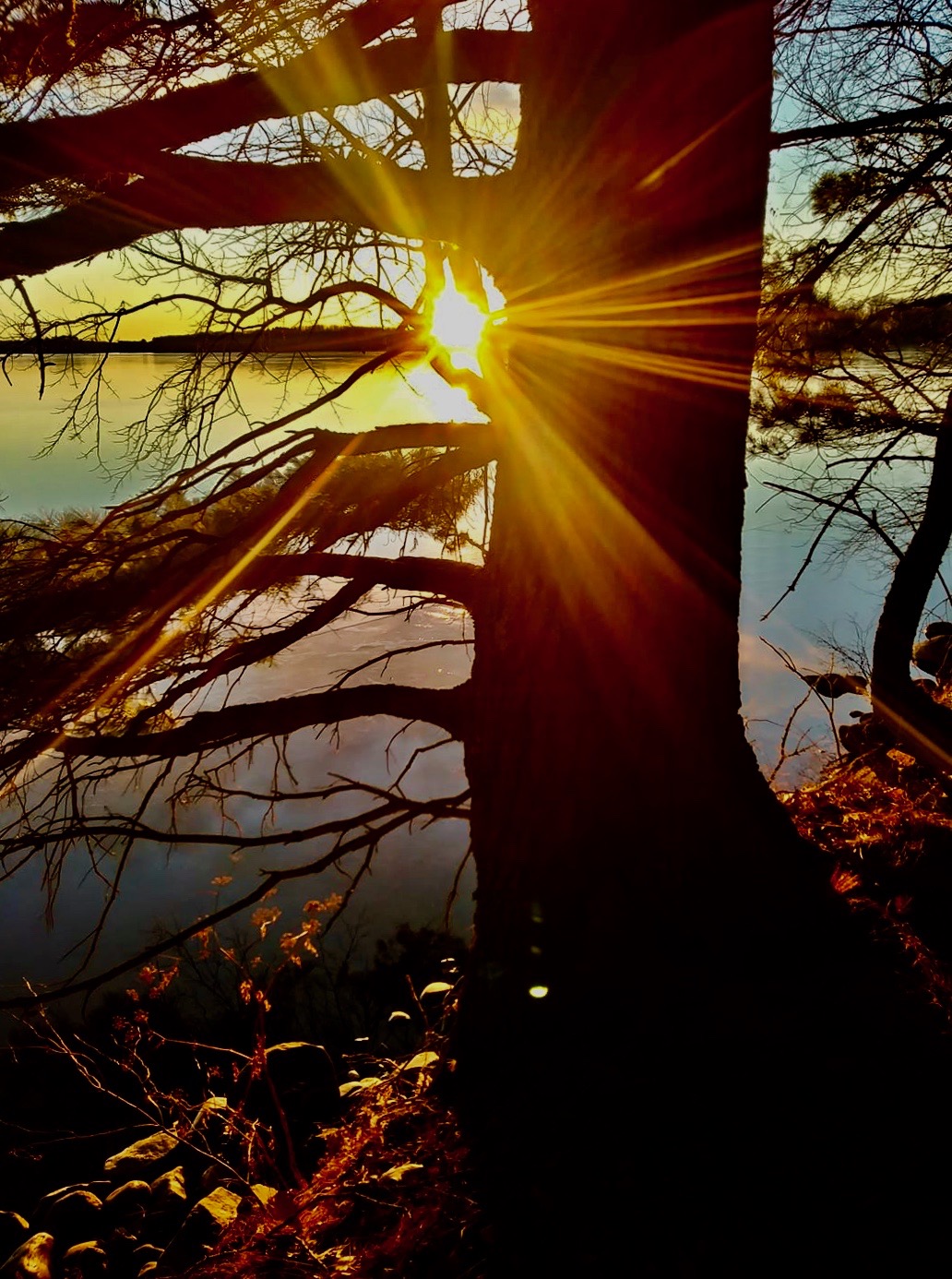DECEMBER 5, 2020 – Yesterday afternoon I split town for the Red Cabin to take advantage of some unusually mild weather over the next several days. Because of the pandemic, I’ve spent more time in the woods this year than ever before. I call it—the woods, not the pandemic—“imagination paradise,” a place where nature stirs the mind to see more than the eye beholds.
I arrived less than an hour before sundown, which in every season, is the magical hour. On a clear day it’s when the sun sharply defines everything it strikes—the touch point of boughs of adjoining pine; the rugged trunk of an ancient, gnarly tree; the rows of rocks along the shore. At first all looks still, projecting the illusion that here and now the world has stopped. But when I stop to take stock of the scene before me—and perhaps to capture an image of it on my smartphone—I notice that only my feet have stopped. The world turns, the sun moves—or more accurately, the world turns, the sunlight slips until everything that basked in glory now fades, becomes ordinary again, and eventually slides into dark oblivion.
Everything except the moon and stars. When all surrounding me here on earth is hidden and forbidding, a visual chorus forms overhead. As it sings to all who can imagine its melody, heaven fills the soul with wonder, and though this experience is nothing new, it’s just as awe-inspiring as it was two weeks ago and a month before that and years before that and in the very first few years of my life. I remember, as a young child, looking at the nighttime sky and experiencing a paradox—though at the time, of course, I had no acquaintance with the word or its meaning. I realized how much my thoughts mattered . . . to me . . . yet at the same time, how little I mattered to all those stars. In a way I couldn’t yet understand or articulate, but in a manner I could sense nonetheless, I experienced the concepts of immensity and infinity intertwined.
Now, decades later, I react with ever more awe when I see earthbound wonders and survey nighttime worlds above. With exposure to a smidgeon of art and science and upon the complex of reference points that one builds over a lifetime, I see many more things in all these . . . things. In those pine boughs touching, I see Michaelangelo’s fresco, The Creation of Adam; in the ancient tree silhouetted in the fading light of dusk, I see a fearless guardian of the realm; in the shoreline stones I see the geologic history of earth. Between Saturn and Jupiter and between Jupiter and a point on earth—somewhere to the southwest, it seems, from where I stand—I see a zip line on which millennia of human observations and mathematical calculations have ridden.
Wonders of all sorts occur in the city too, but up here they’re in better focus at center stage.
(Remember to subscribe to this blog and receive notifications of new posts by email.)
© 2020 by Eric Nilsson
